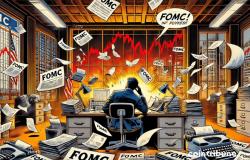It was in 2001 that the acronym BRIC appeared for the first time from the pen of an economist to designate the group of countries, formed by Brazil, Russia, India and China, intended to supplant the G7 in the 21st century in terms of wealth created.
It would be necessary to wait until 2009 for an embryonic union to emerge between these 4 countries in the form of diplomatic conferences. Quickly joined in 2011 by South Africa, this club, which became BRICS, is heterogeneous on several levels: political regime, level of development, ambitions on the international scene. Nevertheless, a common objective unites its members: to constitute an attractive alternative to the world order inherited from the Second World War, led by the United States.
Today, BRICS+ has overtaken the G7 in terms of GDP. They represent almost half of the world’s population, and often more than half of the planet’s production and reserves of raw materials.
But this club, which gave birth to a development bank with limited means – the NDB for New Development Bank – is defined above all by an annual conference that resembles a forum. The last one was held at the end of October in the Volga basin, in Kazan, Russia. What to remember?
If China and India have found a diplomatic solution to the conflict between them along their Himalayan border, the notable fact remains the trend towards the enlargement of this club. Joined at the start of 2024 by 4 new members – Egypt, Ethiopia, Iran and the United Arab Emirates – the BRICS+ continues to open up, at the risk of even greater heterogeneity, and potentially more restrictive in terms of ambitions. Many countries are knocking on the door, as evidenced by the thirty invited countries present in the capital of Tatarstan.
The ambition of the BRICS is intact: to free itself from the yoke of the United States, and therefore of the greenback, on a financial level. The establishment of a payment system independent of the SWIFT network1 remains on the agenda. The implementation of BRICKS PAY would make it possible to circumvent international sanctions which hit Russia and Iran in particular. But it still seems hypothetical, because it is complex given the hegemony of the dollar king in international trade. Christine Lagarde, president of the European Central Bank, expressed her skepticism, saying: “I will probably not see the renminbi dethrone the greenback in my lifetime.”
Economically, BRICS+ has kept its promise, constituting the main engine of global growth over the past 25 years. On the stock market, it’s a completely different story. Thus, since 2009, the date of their foundation, the index calculated by MSCI has only reported a performance of 3.6% annualized, while the index of the G7 countries has grown 3.5 times faster, at 12.4% annualized2. The index of the founding countries today represents only 5% of global stock market capitalization, and the G7 countries… 81%3!
Economic performance does not always translate into stock market success. The quality of governance, individual and collective freedoms, the presence of checks and balances, legislative stability, a real capacity for innovation are all other factors supporting stock market performance. In these aspects, the cracks of BRICS+ are clearly visible.
Writing completed on October 31, 2024
1 Based in Europe, SWIFT – Society for Worldwide Interbank Financial Telecommunication – is an interbank messaging system.
2 From 06.16.2009 to 08.30.2024
3 Sources MSCI / Bloomberg / LFDE






